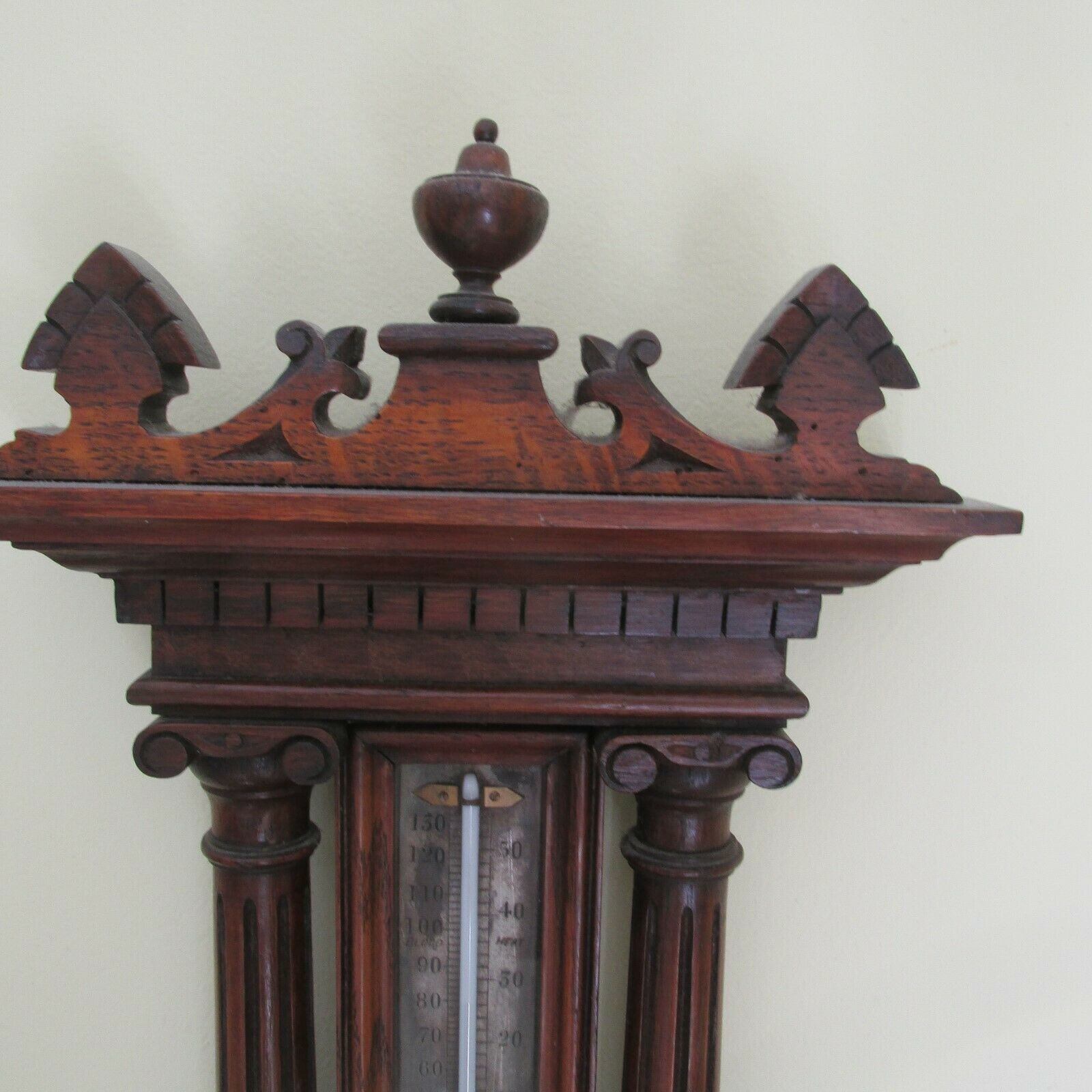-40%
Antique T Armstrong & Brother Manchester England Banjo Wall Barometer Original
$ 277.2
- Description
- Size Guide
Description
This is a Rare large Antique “Turn Of The Century” English Gothic Victorian Banjo Wall Barometer & Thermometer, made by Thomas Armstrong & Brother Ltd. Manchester England, circa 1890's. It has a hand crafted Oak Wood Case with Ornate Designs Absolutely Stunning!!! The dial is silver metal with a fixed glass bezel, signed T. Armstrong & Bro 33 & 90 Deansgate Manchester. It has an upright working mercury Fahrenheit and Centigrade thermometer The case has styling design similar to a high end Victorian grandfather clock. It is large and measures approx. 33″ Tall x 10 1/2″ Wide x 3 1/2" Deep. The barometer does not appear to be working correctly, and may need calibration.This will make a stunning addition to any collection! The thermometer contains mercury and this piece cannot economically be shipped. Local pick up only or I will gladly personally deliver within 20 miles of Hudson, FL 34667.
I have provided some history from the company below.
Thomas Armstrong & Brother Ltd was a well known and important producer of scientific instruments, in particular optical equipment. The company was originally founded in 1825 then known locally as the old Deanery by Joseph Armstrong and was based at 261 Deansgate, specializing in jewelry and silversmithery. Joseph Armstrong was married to Sarah Booth in 1828 and had three sons Thomas, George and Alfred. By the time Joseph Armstrong died in 1851, Thomas Armstrong with the help of his brother George Booth, took over the management of the company having already ran it in for some years prior to his fathers death. It was at this time the company was renamed Thomas Armstrong and Brother Ltd and subsequent expansion into the manufacture of spectacles and optical equipment was started. The expansion was to bare fruit for the brothers and in 1877 the company was officially appointed as the opticians to the Manchester Royal Eye Hospital. Based on Oxford Road. Thomas Armstrong had already formed links with the eye hospital after becoming a life trustee after a donation of 10 guineas. In 1877, the scientific and optical side of the the business had grown to such an extent that the premises were extended to meet the demand for the brothers products. In the years between 1877 1891 the company grew considerably in size and reputation, employing 15 people including Georges younger brother Alfred. By the time the company exhibited at the Industrial Exhibition of 1887, the company had become known for its innovation. It was also at this time that the company acquired additional premises on St Mary Street. Thomas Armstrong had now finely tuned his eye for opportunity and publicity, notably holding the first exhibition of animated pictures and also introducing the now burgeoning city of Manchester to compressed oxygen and hydrogen gases for scientific and demonstrative purposes. During this period the companies reputation was such that in 1891 the company won the contract to supply the War Office. The Board of Trade. And the General Post Office. O with scientific instruments. Towards the end of 1890s and with the possibility of the death of Thomas Armstrong, his son, Frank Armstrong came into the business and the company spread its wings further, expanding into Liverpool in 1904 with the opening of a branch at 112 Bold Street, whilst back in Manchester moving its headquarters to larger premises at 78 Deansgate. It was also at this time that George died, after which Frank Armstrong made his home above the shop. At the advent of the First World War. In 1914, Thomas Armstrong and Brother Limited had diversified further and was now supplying the War Department. With gun sights, elevation equipment and surveying equipment. The company also supplied clocks, watches and submarine detectors to the naval services. Frank Armstrong however stayed with the company for a further 10 years. By the time of the companies centenary in 1925, the company was employing 125 people and had further expanded its services and range of optical and scientific equipment such as microscopes, telescopes, laboratory, nautical and meteorological equipment and now included jewelry and timepieces for which it offered a winding service, whilst also specializing in horn and tortoiseshell spectacle frames.



















